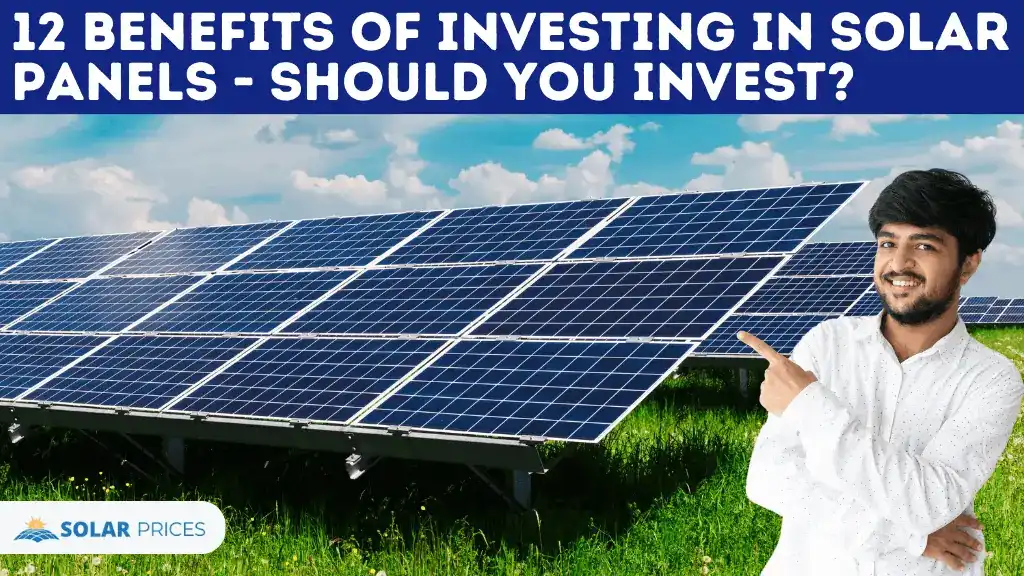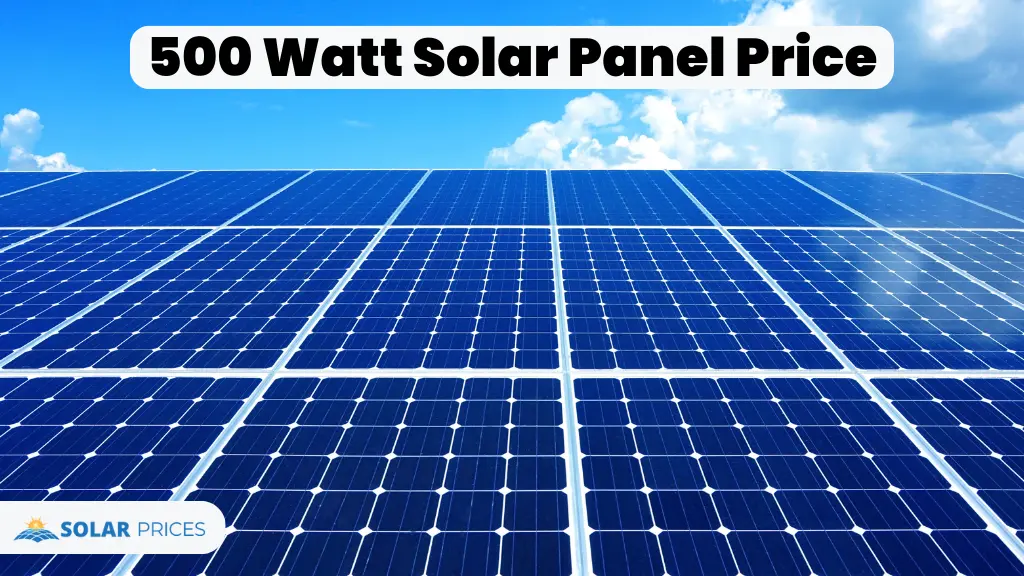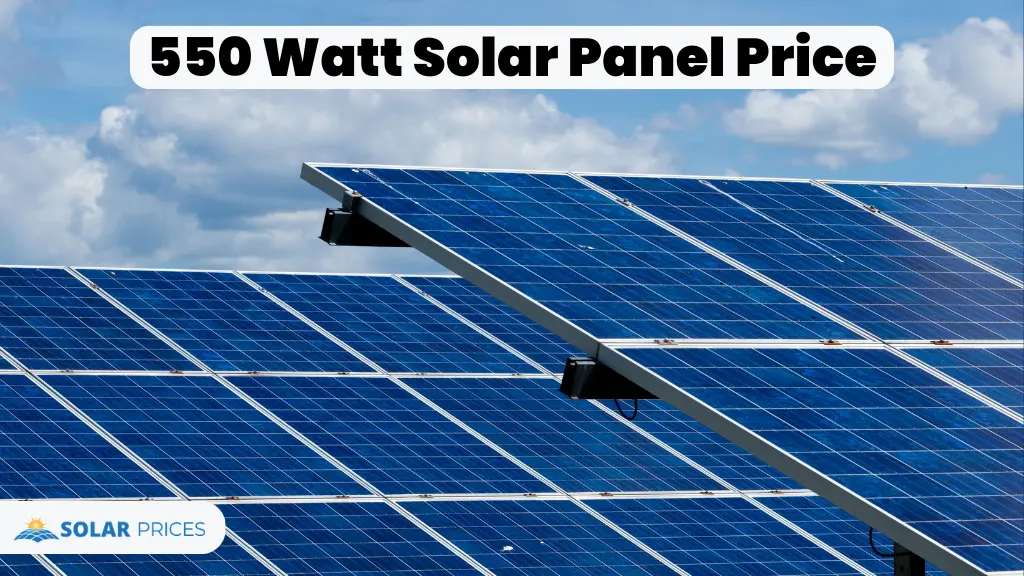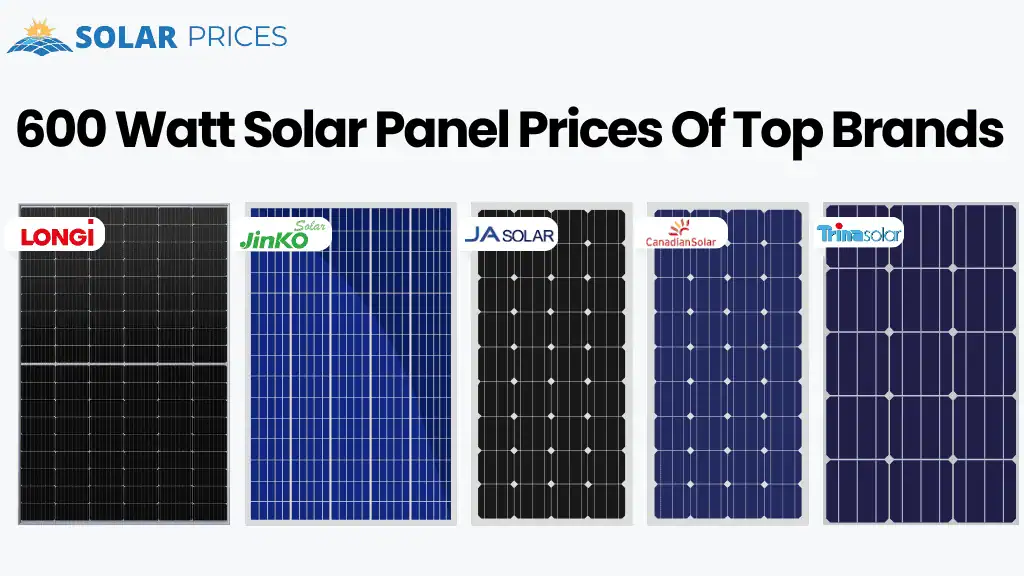Solar Panel Prices in
Pakistan 04 August
2024 | Daily Updates
Solar energy can save you a lot of money on electricity bills. Let us explore the following pricing tables for the latest solar panel prices in Pakistani solar markets. Here is a happy news: Meezan Bank is offering solar financing for domestic and other types of solar projects. Let’s check out today’s documented A-grade and B-grade solar plate prices below:
Highest Performance
LONGi Hi-Mo 7

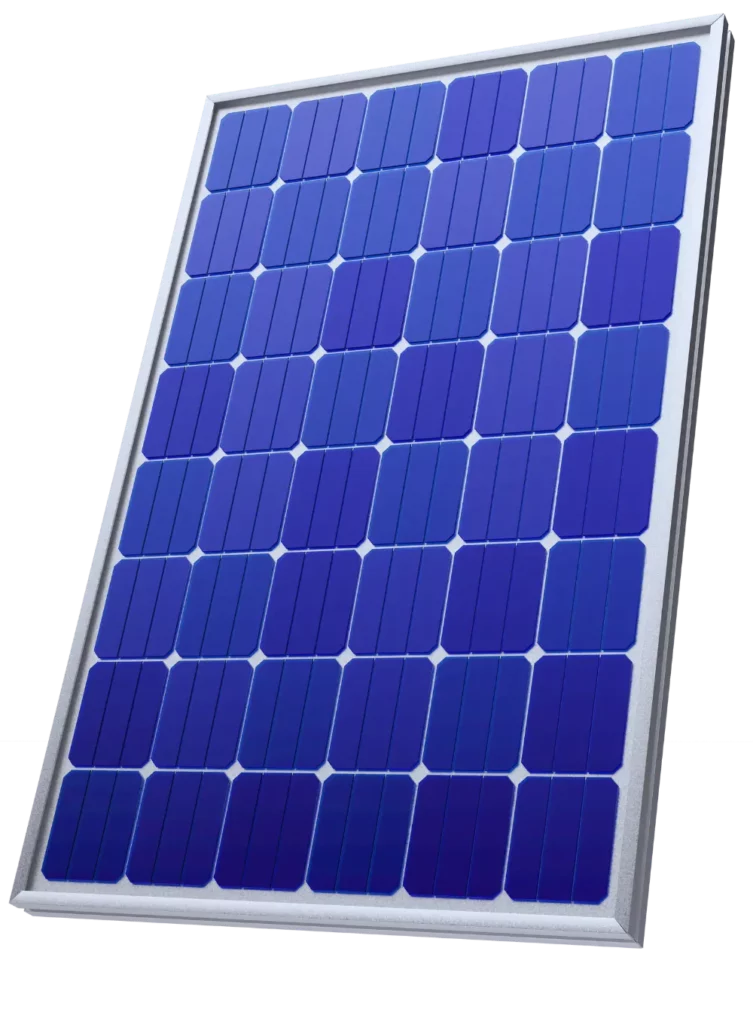
Highest Efficiency
Jinko N-type
Solar Panel Prices in Pakistan 04 August 2024
People in Pakistan are shifting towards solar energy on a massive scale these days. So, solar system is considered the only electrical solution in Pakistan. However, solar panels are sold across the whole country with a price variation (upto 6 rupees per watt). For example, a-grade solar panel of 550 watt may be selling at 55 rupees per watt in Karachi but the same panel will be selling at different (higher) prices in other smaller cities. However, solar panel rates in Lahore should be comparable to the prices in Karachi. This variation in pricing usually happens due to transportation expenses. That is why a range of recent solar plate prices in Pakistan is provided in the following tables:
Today's LONGi Solar Panel Prices in Pakistan
Today's Jinko Solar Panel Prices in Pakistan
Today's JA Solar Panel Prices in Pakistan
Today's Canadian Solar Panel Prices in Pakistan
Today's Trina Solar Panel Prices in Pakistan
Today's B-grade Solar Panel Prices in Pakistan
Latest Solar Panel Prices in International Market [For Importers]
LONGi Hi-Mo 6 Vs. Jinko N-Type [ Which is Preferred? ]
A-grade Solar Panels Vs. B-grade Solar Panels
No. of Solar Panels Required for a Solar System?
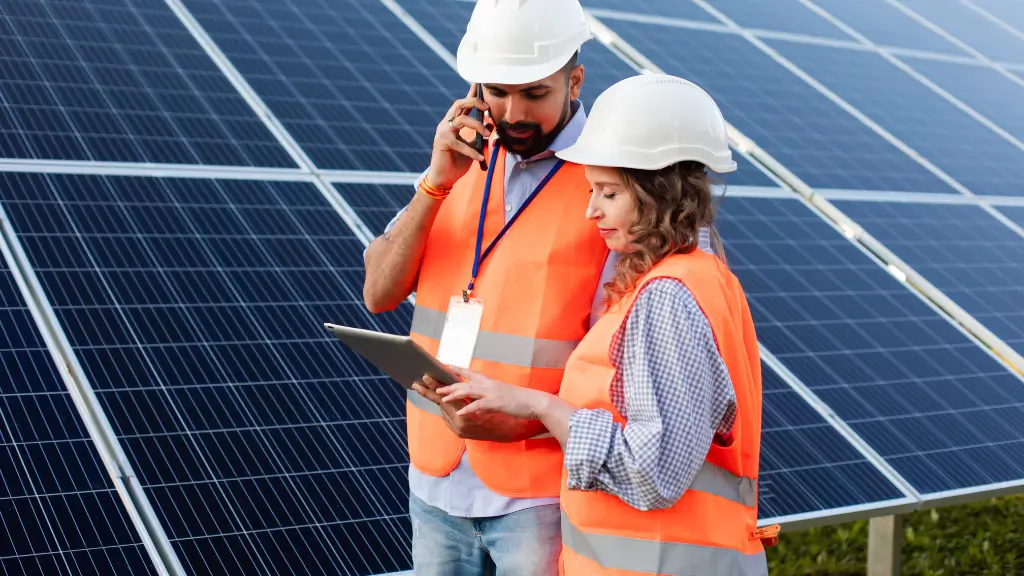
“How many solar panels are required for a domestic or commercial solar system?”, there is no one-size fits all solution (answer) of this question. In the following table, there is a comprehensive calculation of solar panels required for a solar system of a 5kw, 6kw, 8kw, 10kw, 12kw, 14kw, 15kw…up to 35kw along with the saving in terms of reduction in electricity bills. The solar panels considered for the installation are of 550 wattage. You can also use more than 550 wattage solar panels of tier-1, a-grade manufacturers.
Solar System Electrical Production per Month
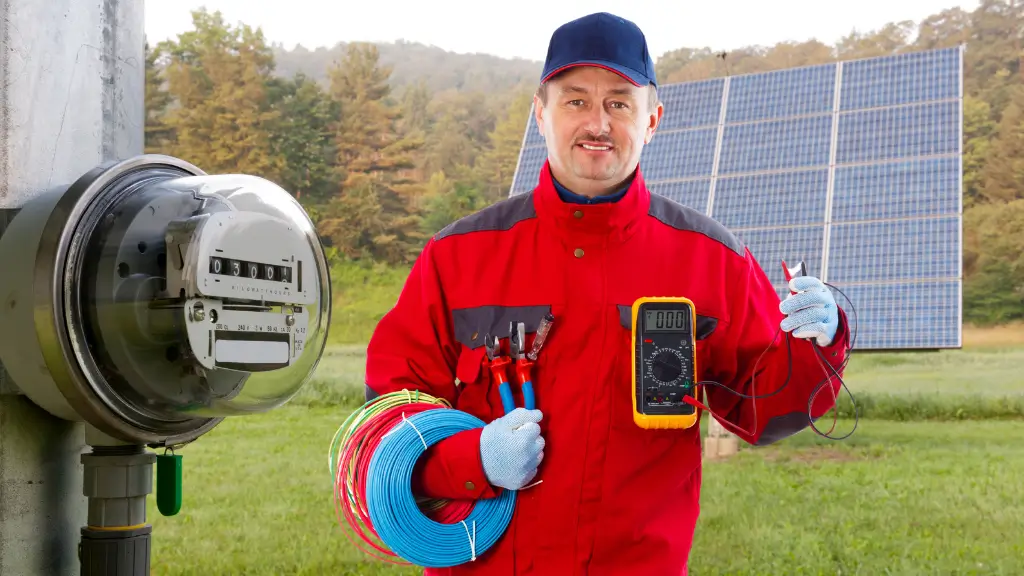
Solar panels convert sunlight into electricity for free. This is green energy and no threats to our environment. In the following table, explore the production of electricity units per month on the basis of installed capacity of your solar system.
Why Solar Plate Prices in Pakistan Fluctuate?
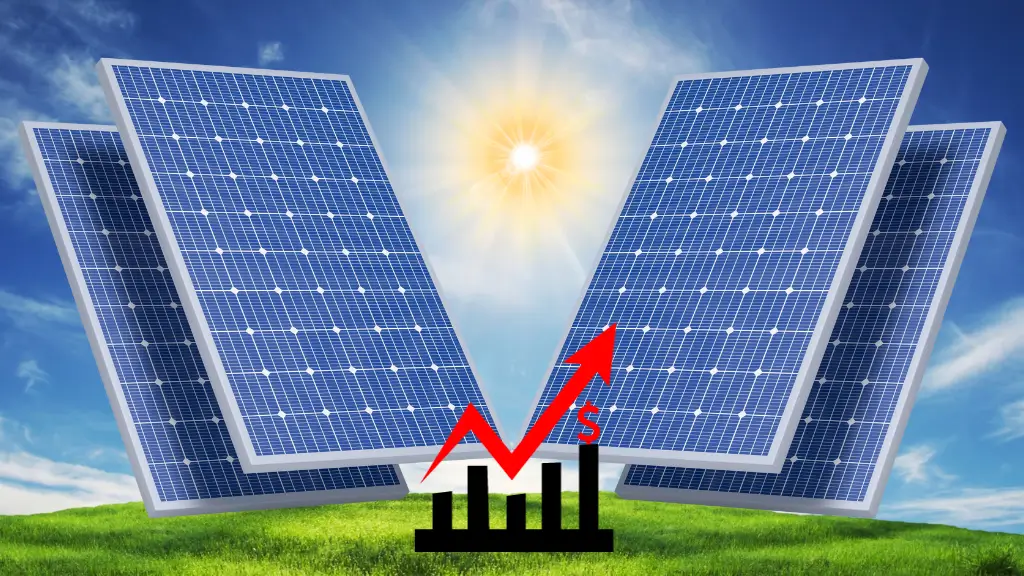
Solar cell technology (photovoltaics) offers an eco-friendly solution for both household and commercial energy needs. The whole world is shifting towards renewable energy sources to address climate change.
To understand the fluctuating prices of solar panels in Pakistan, It is necessary to consider the technical parameters that play a pivotal role in the cost of solar panels.
These include: Wattage Capacity The technology employed, Solar panels, builds quality Efficiency measures Mono-facial/bi-facial functionality Lifespan warranty Power output.
Moreover, hike in demand and supply shortages further impact solar panel prices, causing unrest among consumers.
However, several factors contribute to the instability in solar panel prices within the country. Poor economic conditions have led to escalating oil, gas, and electricity expenses, prompting a surge in the demand for solar panels across Pakistan.
A Complete Solar Installation Guide
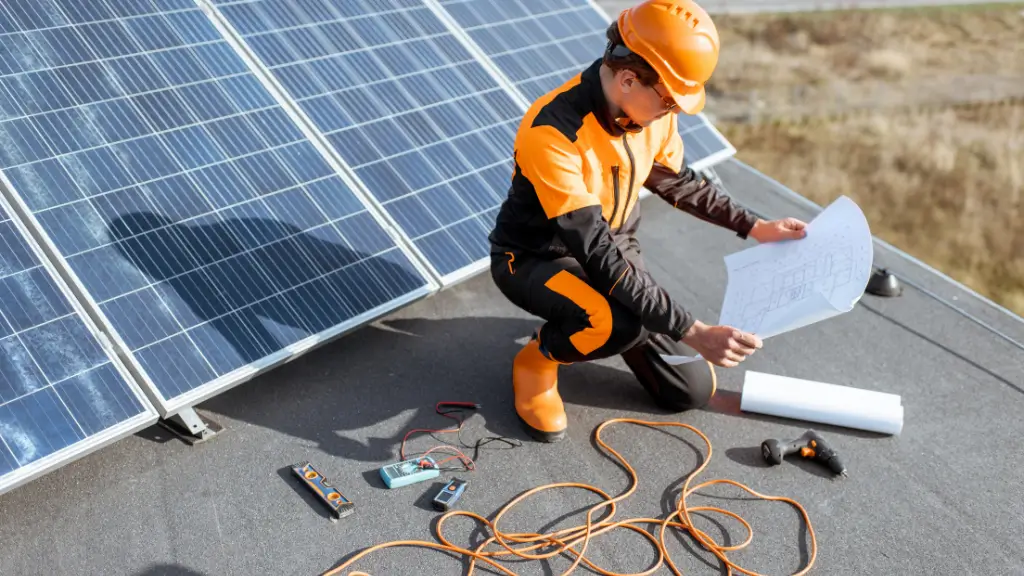
Solar panels have emerged as a beacon of sustainability and pollution-free resources. Photovoltaic cells transform sunlight into clean green electricity.
While the benefits of solar power are undeniable, the installation process may seem confusing to a layman.
Don’t worry, this installation guide will help you understand the installation process with confidence and clarity.
Let’s learn the installation process to ensure the efficient outcomes of solar panels.
Pre-Installation Preparations
Roof Assessment:
Before starting the installation, it is crucial to conduct a thorough assessment of your roof’s structure. Ensure that your roof is capable of supporting the weight of the solar panels. Also, double-check that necessary repairs are addressed before installation.
Permits and Approvals:
Familiarize yourself with the local regulations and procedures governing solar panel installations. Obtain the necessary permits and approvals from your local authorities to ensure compliance with legal requirements.
This is the case when your solar system produces over electricity than your domestic energy needs and you want to sell the rest of the solar energy to your regional utility(necessary for net metering).
Tool Acquisition:
If you are a technical person and want to install your solar system by yourself, the tool kit is a must. So, assemble a well-stocked toolbox comprising essential tools such as a drill, screwdriver, safety glasses, gloves, and measuring tape. Having the right tools at hand will streamline the installation process and enhance safety.
Panel Selection:
Carefully select solar panels that align with your specific energy needs, roof space, and budget considerations.
Consider the characteristics and efficiency ratings of monocrystalline, polycrystalline, and thin-film solar panels to make an informed decision.
A Step-by-step Installation Procedure
Mounting Rail Installation:
The installers will securely attach the mounting rails to your roof. They will ensure proper alignment and spacing according to the manufacturer’s specifications.
You should make sure that they utilize the appropriate mounting hardware and follow the recommended fastening techniques.
Panel Placement and Alignment:
The Installer should carefully lift and position the solar panels onto the mounted rails. You should ensure that solar panels are securely fastened and correctly aligned.
They must adhere to the manufacturer’s guidelines and maintain consistent spacing between the solar panels.
Electrical Wiring and Connections:
It’s the most crucial part of installation. So, installers must connect the solar panels in a series using MC4 connectors. Installers must follow the manufacturer’s instructions and the industry standards. You must ensure proper insulation and protection of all the electrical connections.
Inverter Installation:
The inverter plays a vital role in converting the direct current (DC) generated by the solar panels into alternating current (AC). Installers must install the inverter in a well-ventilated location and ensure compliance with electrical safety standards and regulations.
Grid Connections:
Finally, installers will connect the inverter to the main electrical panel using the appropriate cabling and connectors. Ensure proper grounding and adherence to local electrical codes and safety standards.
Seeking Expert Guidance
While the interest of DIY solar panel installation may be tempting, it is strongly recommended to seek the assistance of qualified solar installers for the first time.
Their expertise, experience, and specialized tools will ensure a safe, efficient, and code-compliant installation. It will maximize the benefits of your solar system and minimize the risk of potential hazards.
Remember, solar panel installation is an investment in your future. It empowers you to harness the sun’s never-ending energy. It helps you reduce your reliance on conventional power sources.
With careful planning, the right tools, and the guidance of experienced professionals, you can transform your home into a solar-powered haven. That will also contribute to a cleaner and more sustainable tomorrow. Take a step and welcome to the clean-green electricity!
FAQs
There is no simple answer to this question. It depends on your electrical load or consumption. In the above given tables, check out the table of the number of panels required for a solar system.
Again, no simple straight answer but there is a chance to DIY solar installation if you are a technical person. Explore above given solar installation guide.
Solar panels work on the principle of photovoltaics that is when sun light shines on a solar plate, the light is absorbed by the solar cells and is converted into electrical energy.
No, solar panels work by absorbing sunlight, in the night, there is no sunshine, so no electrical energy production by the solar panels at the night.
Discover the Key Steps for Solar System Installation
Investing in solar energy is highly fruitful. If you are a technical person, you may better understand how to get started. If not, no worries. Visit a well-reputed solar installation company near you and ask them about your solar project. Check out the solar roadmap in the following:
Market Research
Before you buy solar panels, conduct a complete market research to get better quote. It ensures quality of solar products and makes your investment safe.
Budgeting
Calculate your energy consumption and make a budgeting for required solar system production accordingly. Budgeting makes your workflow smooth and seamless.
Reputed Company
After complete home work for solar system, look for a trustworthy solar installation contractor and sign a deal. Their good repute ensures you are working with trusted partners.
Proven Benefits of Solar Systems
Sun is shining for more than millions of years. Its energy is used by the plants. In the same way, we can take our share from sunshine. Make a smart decision and invest in solar system today. Save yourself from load shedding and heavy electrical bills forever.
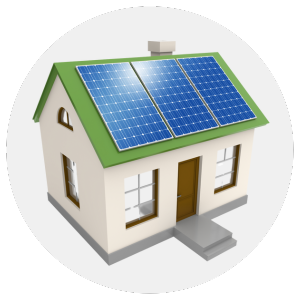
Load shedding and heavy cost can damage your financial management within no time. Make your home your solar power house.
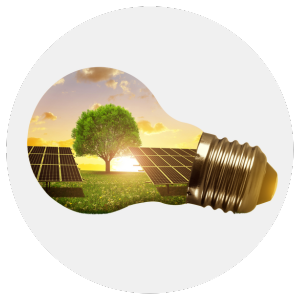
Solar system is like your own electrical grid at home. Investing in solar has a potential to produce free electrical power.

Reducing electrical bills can save your money and let you invest your funds in other business. Make yourself future proof.
One-time Solar Investment, Long-term Relief Discover What Matters the Most for Going Solar!
Make yourself electrically independent by harvesting the unlimited solar power. Take a little pain to enlighten your home today, be electrically tension free for decades. Explore the key benefits of solar now.
Vélemények az online kaszinókról: hogyan segítenek a játékosok valós véleményei a megbízható platform kiválasztásában
Mielőtt fiókot hoznának létre egy virtuális játékklubban, a legtöbb tapasztalt játékos először is ellenőrzi az online casino vélemények. Ez nem is csoda: éppen a felhasználók valódi véleményei adnak lehetőséget arra, hogy az egész képet lássuk – a kifizetések tisztaságától a játékosok támogatásáig. A weboldal főoldalán található reklámok vagy ígéretekkel ellentétben a vélemények elfogulatlan információforrások, amelyek hétköznapi emberek tapasztalatait tükrözik.
Minden játékos biztos akar lenni abban, hogy pénze biztonságban van, hogy a platform nem késlekedik a nyeremény kifizetésével, és hogy a játékok valóban tisztességesek. Éppen ezért a vélemények döntő jelentőségűek – megóvhatnak a kellemetlen élményektől, vagy éppen ellenkezőleg – megerősíthetik, hogy a kaszinó valóban megbízható.
Mit lehet megtudni a játékosok véleményéből
A játékosok nem csak akkor hagyják meg véleményüket, ha valami nem tetszik nekik. Gyakran megosztják pozitív benyomásaikat, összehasonlítják a bónuszprogramokat, értékelik a felületet, vagy megemlítik, milyen könnyű volt kivenni a pénzt. Ez lehetővé teszi az új felhasználók számára, hogy még a regisztráció előtt teljes képet kapjanak a platformról.
A véleményekben megtalálható információk:
- A kifizetések gyorsasága és megbízhatósága. A legtöbb játékos figyel arra, hogy mennyi időbe telik a pénz kifizetése.
- Rejtett feltételek megléte. Például egyes platformok túlzott ellenőrzést követelnek, vagy a játék során megváltoztatják a szabályokat.
- A mobil verzió vagy az alkalmazás minősége. Különösen fontos azok számára, akik okostelefonról játszanak.
- A technikai támogatás munkája. Az operátorok gyorsan válaszolnak? Segítenek bonyolult helyzetekben?
- A valós nyerési százalék értékelése. Néha a játékosok megosztják saját statisztikáikat és játékeredményeiket.
Ezeket a szempontokat figyelembe véve a felhasználó elkerülheti a kockázatokat és nem kerülhet csaló platformra.
Hol lehet megbízható véleményeket találni: megbízható források
Az internet tele van véleményeket tartalmazó weboldalakkal, de nem mindegyik megbízható. Gyakran előfordul, hogy egyes platformok pozitív vagy negatív véleményeket rendelnek meg egy adott kaszinó népszerűsítése vagy a versenytársak lejáratása érdekében. Éppen ezért fontos odafigyelni az információforrásokra.
Megbízható platformok vélemények olvasásához:
- Speciális fórumok játékosok számára. Például a GamblingPortal, a CasinoGuru, az AskGamblers – itt őszinte véleményeket találhat valódi felhasználóktól.
- Panaszok és választottbírósági platformok. Egyes webhelyek lehetővé teszik, hogy panaszt tegyen a kaszinó ellen, és ez jó lehetőség arra, hogy megnézze, hogyan reagál az üzemeltető a problémákra.
- YouTube-csatornák. A játékosok gyakran rögzítenek videókat a játékélményeikről, a pénzkivonásról vagy az ügyfélszolgálat teszteléséről.
- Telegram- vagy Facebook-csoportok. A játékosok közösségei megvitatják az egyes webhelyek előnyeit és hátrányait.
Kerülje azokat a platformokat, ahol az összes vélemény túl pozitív vagy azonos stílusban van megírva. Ez megrendelt kampányra utalhat.
Hogyan lehet felismerni a hamis véleményeket: tippek a játékosoknak
Az online szerencsejáték világában a hamis vélemények mindennaposak. Gyakran manipulációs célokra használják őket: hogy felhívják a figyelmet új kaszinókra, vagy éppen ellenkezőleg, hogy rontsák a versenytársak hírnevét. A hamis véleményeket nem olyan nehéz felismerni, ha ismerünk néhány jelét.
Hogyan lehet felismerni a hamis véleményeket:
- Túlzott érzelmesség. Ha a véleményben sok felkiáltójel, dicséret vagy negatívum található konkrétumok nélkül, az gyanús.
- Részletek hiánya. A valódi játékosok gyakran említik a konkrét összegeket, játékokat, fizetési rendszerek nevét.
- Sablonos szerkezet. Ugyanaz a szöveg jelentkezhet több weboldalon is, kis változtatásokkal.
- Új fiókok. Ha a szerző nemrég regisztrált és csak egy véleménye van, érdemes óvatosan kezelni.
- Folyamatos összehasonlítás a versenytársakkal. A hamis vélemények gyakran olyan mondatokkal vannak kísérve, mint: „De egy másik kaszinóban jobb”.
A legjobb, ha a pozitív és negatív vélemények számát vesszük alapul – fontos, hogy a mérleg reális legyen. Ideális kaszinó nem létezik, ezért ha minden vélemény dicsérő, az gyanút kelthet.
Hogyan használjuk a véleményeket az ideális kaszinó kiválasztásához
A vélemények elolvasása csak az első lépés. Ahhoz, hogy helyes döntést hozzunk, tudnunk kell helyesen értelmezni az információkat és összehasonlítani azokat a személyes prioritásainkkal. Például, ha fontos számunkra a gyors kifizetés, figyeljünk azokra a véleményekre, amelyek konkrét tranzakciós időt említenek. Ha pedig mobilról szeretne játszani, értékelje a mobil verzió felhasználóinak tapasztalatait.
Hogyan lehet hatékonyan felhasználni a véleményeket:
- Szűrje az információkat. Nem minden vélemény egyformán fontos. Azokra koncentráljon, amelyek az Ön játékstílusához kapcsolódnak.
- Értékelje a platform általános hírnevét. Ha a vélemények 80%-a pozitív, 20%-a negatív, de konkrét helyzetekhez kapcsolódik, az normális.
- Figyeljen a kaszinó reakciójára. Ha az adminisztráció válaszol a negatív megjegyzésekre és megpróbál segíteni, az jó jel.
- Ne csak egy forrást olvasson. Kombináljon különböző forrásokat, hogy objektív képet kapjon.
- Tegyen próba befizetést. Miután kiválasztotta a platformot, jobb, ha egy kis összeget befizet a funkciók tesztelésére.
És ne feledje: minden játékosnak megvan a saját egyedi tapasztalata. A vélemények nem abszolút igazságok, de hatékony eszközök, amelyek jelentősen csökkentik a kockázatokat.
Következtetés
Az online kaszinókról szóló vélemények elolvasása fontos lépés a regisztráció előtt. Ezzel elkerülhető a csalás, megtalálható a tisztességes feltételeket kínáló platform, és meg lehet érteni, mennyire lesz kényelmes a játék, és érdemes-e időt és pénzt fektetni bele. Más játékosok tapasztalatainak felhasználásával megvédheti magát a negatív élményektől, és növeli az esélyeit egy kellemes játékra.
Vélemények az online kaszinókról: hogyan segítenek a játékosok valós véleményei a megbízható platform kiválasztásában
Mielőtt fiókot hoznának létre egy virtuális játékklubban, a legtöbb tapasztalt játékos először is ellenőrzi az online casino vélemények. Ez nem is csoda: éppen a felhasználók valódi véleményei adnak lehetőséget arra, hogy az egész képet lássuk – a kifizetések tisztaságától a játékosok támogatásáig. A weboldal főoldalán található reklámok vagy ígéretekkel ellentétben a vélemények elfogulatlan információforrások, amelyek hétköznapi emberek tapasztalatait tükrözik.
Minden játékos biztos akar lenni abban, hogy pénze biztonságban van, hogy a platform nem késlekedik a nyeremény kifizetésével, és hogy a játékok valóban tisztességesek. Éppen ezért a vélemények döntő jelentőségűek – megóvhatnak a kellemetlen élményektől, vagy éppen ellenkezőleg – megerősíthetik, hogy a kaszinó valóban megbízható.
Mit lehet megtudni a játékosok véleményéből
A játékosok nem csak akkor hagyják meg véleményüket, ha valami nem tetszik nekik. Gyakran megosztják pozitív benyomásaikat, összehasonlítják a bónuszprogramokat, értékelik a felületet, vagy megemlítik, milyen könnyű volt kivenni a pénzt. Ez lehetővé teszi az új felhasználók számára, hogy még a regisztráció előtt teljes képet kapjanak a platformról.
A véleményekben megtalálható információk:
- A kifizetések gyorsasága és megbízhatósága. A legtöbb játékos figyel arra, hogy mennyi időbe telik a pénz kifizetése.
- Rejtett feltételek megléte. Például egyes platformok túlzott ellenőrzést követelnek, vagy a játék során megváltoztatják a szabályokat.
- A mobil verzió vagy az alkalmazás minősége. Különösen fontos azok számára, akik okostelefonról játszanak.
- A technikai támogatás munkája. Az operátorok gyorsan válaszolnak? Segítenek bonyolult helyzetekben?
- A valós nyerési százalék értékelése. Néha a játékosok megosztják saját statisztikáikat és játékeredményeiket.
Ezeket a szempontokat figyelembe véve a felhasználó elkerülheti a kockázatokat és nem kerülhet csaló platformra.
Hol lehet megbízható véleményeket találni: megbízható források
Az internet tele van véleményeket tartalmazó weboldalakkal, de nem mindegyik megbízható. Gyakran előfordul, hogy egyes platformok pozitív vagy negatív véleményeket rendelnek meg egy adott kaszinó népszerűsítése vagy a versenytársak lejáratása érdekében. Éppen ezért fontos odafigyelni az információforrásokra.
Megbízható platformok vélemények olvasásához:
- Speciális fórumok játékosok számára. Például a GamblingPortal, a CasinoGuru, az AskGamblers – itt őszinte véleményeket találhat valódi felhasználóktól.
- Panaszok és választottbírósági platformok. Egyes webhelyek lehetővé teszik, hogy panaszt tegyen a kaszinó ellen, és ez jó lehetőség arra, hogy megnézze, hogyan reagál az üzemeltető a problémákra.
- YouTube-csatornák. A játékosok gyakran rögzítenek videókat a játékélményeikről, a pénzkivonásról vagy az ügyfélszolgálat teszteléséről.
- Telegram- vagy Facebook-csoportok. A játékosok közösségei megvitatják az egyes webhelyek előnyeit és hátrányait.
Kerülje azokat a platformokat, ahol az összes vélemény túl pozitív vagy azonos stílusban van megírva. Ez megrendelt kampányra utalhat.
Hogyan lehet felismerni a hamis véleményeket: tippek a játékosoknak
Az online szerencsejáték világában a hamis vélemények mindennaposak. Gyakran manipulációs célokra használják őket: hogy felhívják a figyelmet új kaszinókra, vagy éppen ellenkezőleg, hogy rontsák a versenytársak hírnevét. A hamis véleményeket nem olyan nehéz felismerni, ha ismerünk néhány jelét.
Hogyan lehet felismerni a hamis véleményeket:
- Túlzott érzelmesség. Ha a véleményben sok felkiáltójel, dicséret vagy negatívum található konkrétumok nélkül, az gyanús.
- Részletek hiánya. A valódi játékosok gyakran említik a konkrét összegeket, játékokat, fizetési rendszerek nevét.
- Sablonos szerkezet. Ugyanaz a szöveg jelentkezhet több weboldalon is, kis változtatásokkal.
- Új fiókok. Ha a szerző nemrég regisztrált és csak egy véleménye van, érdemes óvatosan kezelni.
- Folyamatos összehasonlítás a versenytársakkal. A hamis vélemények gyakran olyan mondatokkal vannak kísérve, mint: „De egy másik kaszinóban jobb”.
A legjobb, ha a pozitív és negatív vélemények számát vesszük alapul – fontos, hogy a mérleg reális legyen. Ideális kaszinó nem létezik, ezért ha minden vélemény dicsérő, az gyanút kelthet.
Hogyan használjuk a véleményeket az ideális kaszinó kiválasztásához
A vélemények elolvasása csak az első lépés. Ahhoz, hogy helyes döntést hozzunk, tudnunk kell helyesen értelmezni az információkat és összehasonlítani azokat a személyes prioritásainkkal. Például, ha fontos számunkra a gyors kifizetés, figyeljünk azokra a véleményekre, amelyek konkrét tranzakciós időt említenek. Ha pedig mobilról szeretne játszani, értékelje a mobil verzió felhasználóinak tapasztalatait.
Hogyan lehet hatékonyan felhasználni a véleményeket:
- Szűrje az információkat. Nem minden vélemény egyformán fontos. Azokra koncentráljon, amelyek az Ön játékstílusához kapcsolódnak.
- Értékelje a platform általános hírnevét. Ha a vélemények 80%-a pozitív, 20%-a negatív, de konkrét helyzetekhez kapcsolódik, az normális.
- Figyeljen a kaszinó reakciójára. Ha az adminisztráció válaszol a negatív megjegyzésekre és megpróbál segíteni, az jó jel.
- Ne csak egy forrást olvasson. Kombináljon különböző forrásokat, hogy objektív képet kapjon.
- Tegyen próba befizetést. Miután kiválasztotta a platformot, jobb, ha egy kis összeget befizet a funkciók tesztelésére.
És ne feledje: minden játékosnak megvan a saját egyedi tapasztalata. A vélemények nem abszolút igazságok, de hatékony eszközök, amelyek jelentősen csökkentik a kockázatokat.
Következtetés
Az online kaszinókról szóló vélemények elolvasása fontos lépés a regisztráció előtt. Ezzel elkerülhető a csalás, megtalálható a tisztességes feltételeket kínáló platform, és meg lehet érteni, mennyire lesz kényelmes a játék, és érdemes-e időt és pénzt fektetni bele. Más játékosok tapasztalatainak felhasználásával megvédheti magát a negatív élményektől, és növeli az esélyeit egy kellemes játékra.
Magyar online kaszinó: játék a hazai piacon
A minőségi szerencsejáték-platform kiválasztása különösen fontos, ha a játékos személyre szabott élményt, kényelmes fizetési módokat és anyanyelvi ügyfélszolgálatot szeretne. Éppen ezért a magyar online casino optimális megoldást jelentenek azoknak a magyar játékosoknak, akik kényelmesen és biztonságosan szeretnének élvezni a játékot. Ezek a kaszinók betartják a nemzeti követelményeket, rendelkeznek a megfelelő engedélyekkel és a helyi ízlésvilágra orientálódnak.
A nemzetközi platformokkal ellentétben a magyar üzemeltetők olyan szolgáltatásokat hoznak létre, amelyek figyelembe veszik a belső piac sajátosságait. A magyar nyelv támogatásától a forintban járó bónuszokig – minden úgy van kialakítva, hogy a játékos otthon érezze magát. Ezenkívül ezek a webhelyek gyakran tartják a kapcsolatot a helyi bankokkal és biztosítják a legjobb szolgáltatási feltételeket.
Jogszabályi szabályozás és a játékosok biztonsága
Magyarország az Európai Unió egyik olyan országa, amelynek szigorú szabályozása van a szerencsejátékok területén. Minden online kaszinó, amely az ország területén kíván működni, köteles állami szervek által kiadott engedélyt szerezni. Ez biztosítja a platform működésének legális voltát és garantálja a játékosok jogainak védelmét.
A jogszabályok legfontosabb rendelkezései a következők:
- Kötelező engedély a Magyarországon székhellyel rendelkező üzemeltetők számára
- A nem regisztrált külföldi platformok tevékenységének tilalma megfelelő engedély nélkül
- A kifizetések ellenőrzése és a játékosok pénzeszközeinek védelme
- Műszaki biztonsági és adat titkosítási követelmények
- A szerencsejátékok reklámozásának korlátozása kiskorúak számára
Ennek köszönhetően a játékosok biztosak lehetnek abban, hogy a magyar online kaszinók átlátható szabályok szerint működnek, nem élnek vissza a bizalommal és tisztességes játékot biztosítanak. Ezenkívül a platformoknak kötelességük felelősségteljes játékra vonatkozó politikát bevezetni és lehetővé tenni a felhasználók számára, hogy kiadási limiteket állítsanak be.
A magyar online kaszinók fő előnyei
A helyi platformokat választó játékosok számos előnyre számíthatnak, amelyek kedvezően megkülönböztetik őket a nemzetközi webhelyektől. Nem csak a tartalom adaptálásáról van szó, hanem a mindennapi használat kényelméről is.
A magyar online kaszinókban való játék fő előnyei:
- Lokalizált felület: teljes magyar nyelvű támogatás a menüben, leírásokban és a technikai támogatásban
- Fizetés forintban: nem kell pénzt átváltani vagy jutalékot fizetni
- Helyi közönségnek szóló bónuszok: különleges akciók magyar ünnepekre vagy nemzeti eseményekre
- Helyi fizetési rendszerek: magyar bankok, OTP Bank, Revolut HUF, Barion stb. támogatása
- A jogszabályok szigorú betartása: garantáltan legális játék átlátható feltételekkel
Ezek a jellemzők sokkal kellemesebbé és egyszerűbbé teszik a játékot. Különösen kényelmes ez az újoncok számára, akik egy intuitív platformon szeretnének kezdeni, nyelvi korlátok nélkül.
Játékok és bónuszok: mit kínálnak a magyar üzemeltetők
A magyar online kaszinók nem maradnak el a nemzetközi társaiktól a tartalom sokszínűségét illetően. Éppen ellenkezőleg: többségük a legjobb játékplatformokat használja, együttműködik a vezető szolgáltatókkal, és hozzáférést biztosít a népszerű és új játékokhoz.
A legnépszerűbb játékok a magyar kaszinókban:
- Videó slotok a NetEnt, Microgaming, Playson
- Klasszikus 3 tárcsás nyerőgépek
- Rulett (európai, amerikai, francia)
- Blackjack, baccarat, póker
- Élő kaszinó valódi krupiékkal
- Kratch-kártyák, keno és egyéb azonnali játékok
A magyar játékosok szintén értékelik a jól átgondolt bónuszrendszert. Általában a következőket tartalmazza:
- Üdvözlő bónusz: 100-200% az első befizetésre + ingyenes pörgetések
- Cashback: heti visszatérítés a vesztett összeg egy részéről
- Ünnepi akciók: bónuszok Szent István napjára, újévi lottó stb.
- Hűségprogram: pontok gyűjtése az aktív játékért
- VIP-klubok: személyre szabott ajánlatok a nagy tétekkel játszóknak, gyorsított kifizetések, egyéni limitek
Ezeknek a bónuszoknak köszönhetően a játékosok több esélyt kapnak a nyerésre, és igazi értékes ügyfeleknek érezhetik magukat.
Fizetési rendszerek és mobil lehetőségek
Külön figyelmet érdemel a fizetési rendszer. A magyar online kaszinók általában támogatják a legnépszerűbb számlabetöltési és pénzkivételi lehetőségeket. Minden tranzakció a biztonsági követelményeknek megfelelően, védett SSL-protokollal történik.
A rendelkezésre álló fizetési módok között megtalálhatók:
- Visa és MasterCard bankkártyák
- Elektronikus pénztárcák: Skrill, Neteller
- Barion és SimplePay – helyi fizetési szolgáltatások
- Banki átutalások az OTP Bank, K&H, CIB bankokon keresztül
- Kriptovalutákkal történő feltöltés (egyes platformokon)
A weboldal mobil verziója vagy speciális alkalmazás – a magyar platformok további erőssége. A legtöbb üzemeltető teljes értékű mobil élményt kínál a funkcionalitás elvesztése nélkül. A játékosok bárhol és bármikor elindíthatják a játékokat, feltölthetik számlájukat és kivehetik pénzt okostelefonjukról.
Egyes kaszinók még exkluzív bónuszokat is kínálnak a mobil felhasználóknak, ami még aktívabbá teszi a platform használatát telefonokon és táblagépeken.
Következtetés
Minden magyar online kaszinó nem csak egy játékterep, hanem egy platform, amely a helyi felhasználók igényeihez igazodik. A magyar nyelv támogatásától és a forintban történő fizetéstől az egyéni bónuszajánlatokig minden a kényelmes és biztonságos környezet megteremtésére irányul.
A játékosok hozzáférhetnek a játékok széles választékához, megbízható fizetési rendszerekhez, magas biztonsági szabványokhoz és kényelmes mobil felülethez. Ezenkívül a licenc követelmények betartása garantálja, hogy minden tranzakció legális és átlátható.
Ha olyan kaszinót keres, amely megérti az Ön igényeit, mint magyar lakos, akkor a helyi üzemeltető választása biztos befutó lesz.
Magyar online kaszinó: játék a hazai piacon
A minőségi szerencsejáték-platform kiválasztása különösen fontos, ha a játékos személyre szabott élményt, kényelmes fizetési módokat és anyanyelvi ügyfélszolgálatot szeretne. Éppen ezért a magyar online casino optimális megoldást jelentenek azoknak a magyar játékosoknak, akik kényelmesen és biztonságosan szeretnének élvezni a játékot. Ezek a kaszinók betartják a nemzeti követelményeket, rendelkeznek a megfelelő engedélyekkel és a helyi ízlésvilágra orientálódnak.
A nemzetközi platformokkal ellentétben a magyar üzemeltetők olyan szolgáltatásokat hoznak létre, amelyek figyelembe veszik a belső piac sajátosságait. A magyar nyelv támogatásától a forintban járó bónuszokig – minden úgy van kialakítva, hogy a játékos otthon érezze magát. Ezenkívül ezek a webhelyek gyakran tartják a kapcsolatot a helyi bankokkal és biztosítják a legjobb szolgáltatási feltételeket.
Jogszabályi szabályozás és a játékosok biztonsága
Magyarország az Európai Unió egyik olyan országa, amelynek szigorú szabályozása van a szerencsejátékok területén. Minden online kaszinó, amely az ország területén kíván működni, köteles állami szervek által kiadott engedélyt szerezni. Ez biztosítja a platform működésének legális voltát és garantálja a játékosok jogainak védelmét.
A jogszabályok legfontosabb rendelkezései a következők:
- Kötelező engedély a Magyarországon székhellyel rendelkező üzemeltetők számára
- A nem regisztrált külföldi platformok tevékenységének tilalma megfelelő engedély nélkül
- A kifizetések ellenőrzése és a játékosok pénzeszközeinek védelme
- Műszaki biztonsági és adat titkosítási követelmények
- A szerencsejátékok reklámozásának korlátozása kiskorúak számára
Ennek köszönhetően a játékosok biztosak lehetnek abban, hogy a magyar online kaszinók átlátható szabályok szerint működnek, nem élnek vissza a bizalommal és tisztességes játékot biztosítanak. Ezenkívül a platformoknak kötelességük felelősségteljes játékra vonatkozó politikát bevezetni és lehetővé tenni a felhasználók számára, hogy kiadási limiteket állítsanak be.
A magyar online kaszinók fő előnyei
A helyi platformokat választó játékosok számos előnyre számíthatnak, amelyek kedvezően megkülönböztetik őket a nemzetközi webhelyektől. Nem csak a tartalom adaptálásáról van szó, hanem a mindennapi használat kényelméről is.
A magyar online kaszinókban való játék fő előnyei:
- Lokalizált felület: teljes magyar nyelvű támogatás a menüben, leírásokban és a technikai támogatásban
- Fizetés forintban: nem kell pénzt átváltani vagy jutalékot fizetni
- Helyi közönségnek szóló bónuszok: különleges akciók magyar ünnepekre vagy nemzeti eseményekre
- Helyi fizetési rendszerek: magyar bankok, OTP Bank, Revolut HUF, Barion stb. támogatása
- A jogszabályok szigorú betartása: garantáltan legális játék átlátható feltételekkel
Ezek a jellemzők sokkal kellemesebbé és egyszerűbbé teszik a játékot. Különösen kényelmes ez az újoncok számára, akik egy intuitív platformon szeretnének kezdeni, nyelvi korlátok nélkül.
Játékok és bónuszok: mit kínálnak a magyar üzemeltetők
A magyar online kaszinók nem maradnak el a nemzetközi társaiktól a tartalom sokszínűségét illetően. Éppen ellenkezőleg: többségük a legjobb játékplatformokat használja, együttműködik a vezető szolgáltatókkal, és hozzáférést biztosít a népszerű és új játékokhoz.
A legnépszerűbb játékok a magyar kaszinókban:
- Videó slotok a NetEnt, Microgaming, Playson
- Klasszikus 3 tárcsás nyerőgépek
- Rulett (európai, amerikai, francia)
- Blackjack, baccarat, póker
- Élő kaszinó valódi krupiékkal
- Kratch-kártyák, keno és egyéb azonnali játékok
A magyar játékosok szintén értékelik a jól átgondolt bónuszrendszert. Általában a következőket tartalmazza:
- Üdvözlő bónusz: 100-200% az első befizetésre + ingyenes pörgetések
- Cashback: heti visszatérítés a vesztett összeg egy részéről
- Ünnepi akciók: bónuszok Szent István napjára, újévi lottó stb.
- Hűségprogram: pontok gyűjtése az aktív játékért
- VIP-klubok: személyre szabott ajánlatok a nagy tétekkel játszóknak, gyorsított kifizetések, egyéni limitek
Ezeknek a bónuszoknak köszönhetően a játékosok több esélyt kapnak a nyerésre, és igazi értékes ügyfeleknek érezhetik magukat.
Fizetési rendszerek és mobil lehetőségek
Külön figyelmet érdemel a fizetési rendszer. A magyar online kaszinók általában támogatják a legnépszerűbb számlabetöltési és pénzkivételi lehetőségeket. Minden tranzakció a biztonsági követelményeknek megfelelően, védett SSL-protokollal történik.
A rendelkezésre álló fizetési módok között megtalálhatók:
- Visa és MasterCard bankkártyák
- Elektronikus pénztárcák: Skrill, Neteller
- Barion és SimplePay – helyi fizetési szolgáltatások
- Banki átutalások az OTP Bank, K&H, CIB bankokon keresztül
- Kriptovalutákkal történő feltöltés (egyes platformokon)
A weboldal mobil verziója vagy speciális alkalmazás – a magyar platformok további erőssége. A legtöbb üzemeltető teljes értékű mobil élményt kínál a funkcionalitás elvesztése nélkül. A játékosok bárhol és bármikor elindíthatják a játékokat, feltölthetik számlájukat és kivehetik pénzt okostelefonjukról.
Egyes kaszinók még exkluzív bónuszokat is kínálnak a mobil felhasználóknak, ami még aktívabbá teszi a platform használatát telefonokon és táblagépeken.
Következtetés
Minden magyar online kaszinó nem csak egy játékterep, hanem egy platform, amely a helyi felhasználók igényeihez igazodik. A magyar nyelv támogatásától és a forintban történő fizetéstől az egyéni bónuszajánlatokig minden a kényelmes és biztonságos környezet megteremtésére irányul.
A játékosok hozzáférhetnek a játékok széles választékához, megbízható fizetési rendszerekhez, magas biztonsági szabványokhoz és kényelmes mobil felülethez. Ezenkívül a licenc követelmények betartása garantálja, hogy minden tranzakció legális és átlátható.
Ha olyan kaszinót keres, amely megérti az Ön igényeit, mint magyar lakos, akkor a helyi üzemeltető választása biztos befutó lesz.

